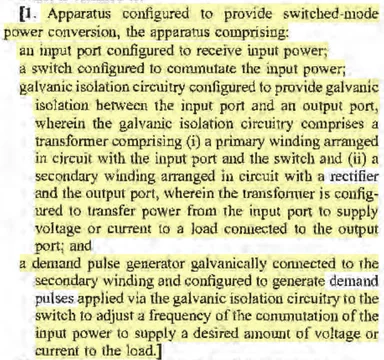
Judge Wolson is a visiting judge with a number of patent cases here in Delaware. His procedures tend to differ a fair bit from Delaware judges in some areas (particularly those involving redactions sealing).
In February, he implemented an interesting new procedure for summary judgment motions. His new procedure requires parties to serve—but not file—their statement of fact in support of the motion 28 days in advance, so that the opposing party can respond on a fact-by-fact basis. The party serving the motion can then respond to that response. The resulting combined statement of facts is then filed with the brief.
This process is intended to result in a single statement of facts that includes the parties' opening, answering, and reply positions as to each fact, in that order and in one document for easy readability:
The result of this process will be a single, consolidated statement of facts that permits Judge Wolson to see each party’s position on each factual assertion in one place. For example, for paragraph 1 in the statement of facts, Judge Wolson will see the movant’s factual assertion and supporting evidence, followed by the respondent’s response, followed by the movant’s reply, before moving to paragraph 2. The moving party must file the consolidated statement of facts and the appendix with its motion.
This is akin to the process that Judge Andrews popularized for claim construction briefing (which we've mentioned before), where the parties serve but don't file their briefs, before stitching them together at the end to form a joint claim construction brief. The final brief goes term-by-term, with the parties' positions in line.
I wanted to flag Judge Wolson's new procedures, not just because he has patent cases here (so they may directly impact some cases), but also because some judges in the District of Delaware have been experimenting with summary judgment procedures over the last couple of years. It will be interesting to see if this proves as popular as Judge Andrews' similar method for claim construction briefing.
Some Thoughts
This new procedure has the effect of moving the summary judgment deadline up by 28 days. There tends to be a lot going on in the case around the time of summary judgment, with expert discovery and expert depositions having just wrapped up. In some cases, it may be difficult to start the exchange process while those events are occurring. I expect we'll see some parties inadvertently risk waiving their right to summary judgment by failing to serve a statement of facts. But we'll see.
I also couldn't find a page limit in the procedures, although maybe I'm missing something. It's clear that the statement of facts is intended to be a separate document from the SJ brief itself, so I don't think that the page limit would be shared. It will be interesting to see how people handle this, and whether they try to impose a page limit.
If you enjoyed this post, consider subscribing to receive free e-mail updates about new posts.




